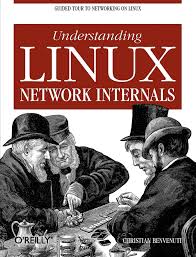White Paper: Deep Dive into Linux Network Internals
Abstract
Linux, as a powerful and flexible operating system, has become the backbone of many modern computing systems. Understanding the intricate workings of its network stack is crucial for network administrators, system engineers, and developers alike. This white paper delves into the core concepts of Linux network internals, drawing insights from the renowned book "Linux Network Internals" by Orielly. By exploring topics such as network device drivers, TCP/IP protocol stack, network performance tuning, and security, we aim to provide a comprehensive overview of the Linux networking landscape.
Introduction
Linux's modular design and open-source nature have made it a popular choice for a wide range of network applications. By understanding the underlying mechanisms of Linux networking, we can optimize network performance, troubleshoot issues effectively, and secure our systems against potential threats. This white paper will explore the essential components of the Linux network stack and provide practical insights into its configuration and optimization.
Key Components of the Linux Network Stack
- Network Device Drivers:
- Device Driver Model: Understanding the kernel module architecture and device driver registration process.
- Interrupt Handling: How interrupt handling mechanisms ensure efficient data transfer.
- Network Interface Cards (NICs): Exploring the different types of NICs and their configuration options.
- TCP/IP Protocol Stack:
- IP Layer: The foundation for packet routing and addressing.
- TCP Layer: Reliable, connection-oriented communication.
- UDP Layer: Unreliable, connectionless communication.
- Socket Programming: Using sockets to create network applications.
- Network File System (NFS):
- Remote File Access: Sharing files and directories across networks.
- NFS Protocol: Understanding the NFS protocol and its versions.
- NFS Performance Tuning: Optimizing NFS performance for various workloads.
- Network File System Version 4 (NFSv4):
- Security Enhancements: Improved security features, including Kerberos authentication.
- Performance Improvements: Enhanced performance through asynchronous operations and data caching.
- Reliability and Scalability: Robustness and scalability for large-scale deployments.
- Network Address Translation (NAT):
- IP Address Masking: Hiding internal IP addresses from the external network.
- Port Address Translation (PAT): Mapping multiple private IP addresses to a single public IP address.
- Network Performance Tuning:
- TCP Tuning: Optimizing TCP parameters for specific network conditions.
- Network Buffer Tuning: Adjusting buffer sizes to improve performance.
- Network Interface Card Tuning: Configuring NICs for optimal performance.
- Network Security:
- Firewalls: Protecting networks from unauthorized access.
- IPsec: Encrypted communication between networks.
- Network Intrusion Detection Systems (NIDS): Detecting and responding to network attacks.
Practical Applications and Best Practices
- Server Configuration: Optimizing network parameters for servers, such as TCP tuning and kernel configuration.
- Network Troubleshooting: Using tools like tcpdump and Wireshark to diagnose network issues.
- Security Best Practices: Implementing security measures to protect network infrastructure.
- Performance Optimization: Tuning network performance for specific workloads, such as high-throughput or low-latency applications.
Conclusion
By understanding the intricacies of the Linux network stack, you can effectively troubleshoot network issues, optimize network performance, and secure your systems. This white paper, inspired by Orielly's "Linux Network Internals," provides a solid foundation for exploring the world of Linux networking. By combining theoretical knowledge with practical experience, you can become a skilled network administrator and architect.
References
- Orielly, L. (2003). Linux Network Internals. Addison-Wesley Professional.
- Linux Kernel Documentation:
- TCP/IP Illustrated, Volume 1: The Protocols by W. Richard Stevens
- Unix Network Programming, Volume 1: The Sockets Networking API by W. Richard Stevens
By delving deeper into the Linux network stack and leveraging the insights from these resources, you can unlock the full potential of your Linux systems and build robust and efficient network infrastructures.



